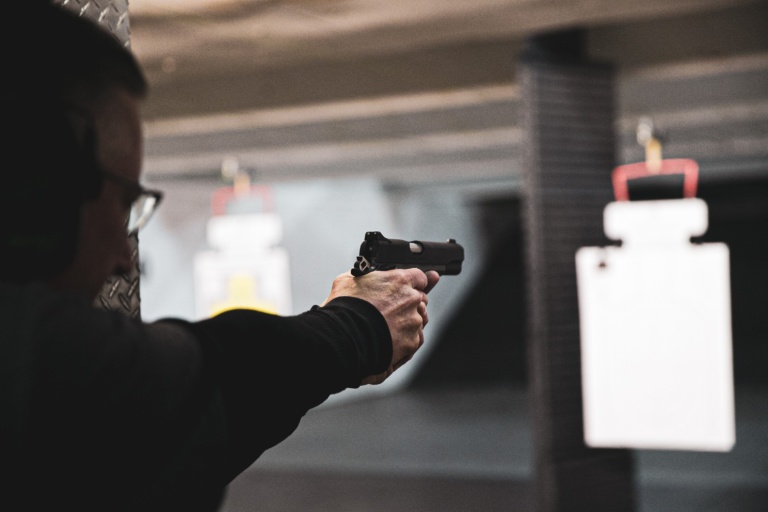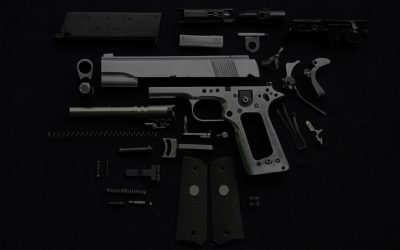Skip’s Tips > Newsletters > Recoil and Recoil Reduction
Recoil and Recoil Reduction
Recoil is unavoidable, but it can be mitigated.
Skip Walters


Sign up to receive insider tips from our Master Gunsmith!
Recoil is unavoidable when firing a rifle, shotgun or handgun. To understand how to mitigate recoil, we must first understand what causes this unpleasant rearward force.
As Newton’s law states: “For every action there is an equal and opposite reaction.” When applied to guns, the force or pressure utilized to set a projectile in motion through the barrel will push the entire gun with an equal amount of rearward thrust in the opposite direction.
A few factors will reduce the rearward thrust. A lighter projectile will require less force, reducing the projectile’s velocity reduces this force and a heavier firearm will require more force to be moved. More thrust/recoil will be absorbed by the movement of the heavier firearm.
A straight long gun stock with little drop at the heel will exert recoil almost directly into the shooter’s shoulder. A stock with a lot of drop at heel will tend to divert some recoil into muzzle rise and reduce “felt” recoil at the shooter’s shoulder. Note that the recoil is not reduced, only slightly diverted. Recoil pads and spring loaded recoil reducers do not reduce the actual recoil, but reduce the affect of the “felt” recoil.
Muzzle brakes and compensators reduce “felt” recoil by redirecting a portion of the muzzle blast rearward, to the sides or upward. This redirected blast mitigates some rearward thrust and muzzle rise. These are devices unusually loud and unpleasant to those nearby, as the muzzle blast is redirected when firing.
Mercury recoil reducers can also be employed. These are sealed cylinders containing mercury and are installed axially in the buttstock, magazine tube or in an unused barrel of a double barrel. The latter are shaped like long shotgun shells and are popular with trap shooters. When the recoil forces the gun rearward, the mercury moves forward against the rearward force, reducing “felt” recoil. The additional weight of these mercury recoil reducers will also further reduce the actual recoil when firing.
In summary, recoil is unavoidable, but it can be mitigated. A stock, properly fit to the shooter, in a caliber or gauge the shooter is comfortable shooting, with recoil mitigation as needed, will make any shooting experience an enjoyable venture.
Go to next article >

More From Skip Walters
Only as Good as the Barrel
The Center of Your Shop
Choosing a Self-Defense Handgun

Polishing Gun Metal

Use Promo Code AIM to save

Free Resources to start your training
